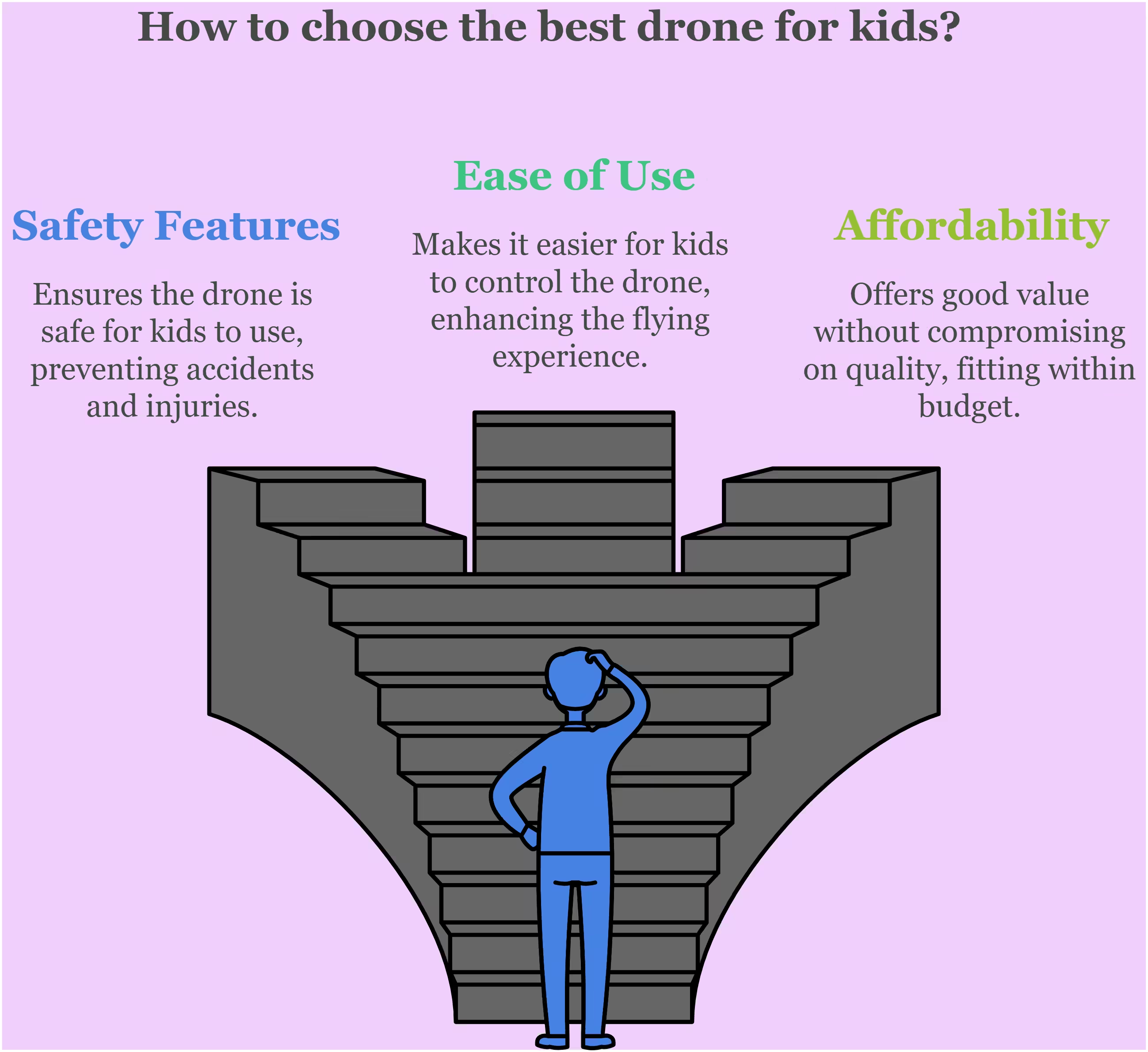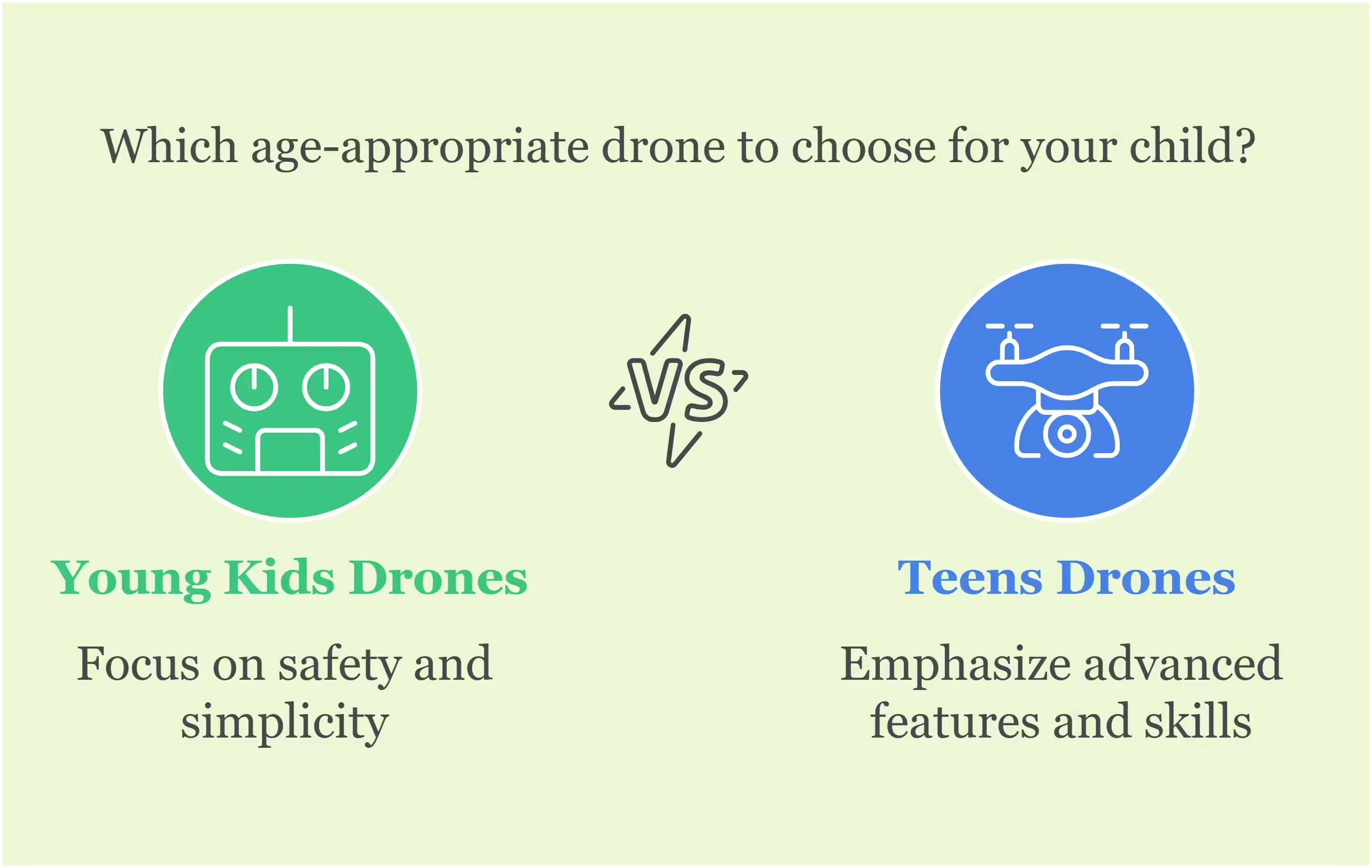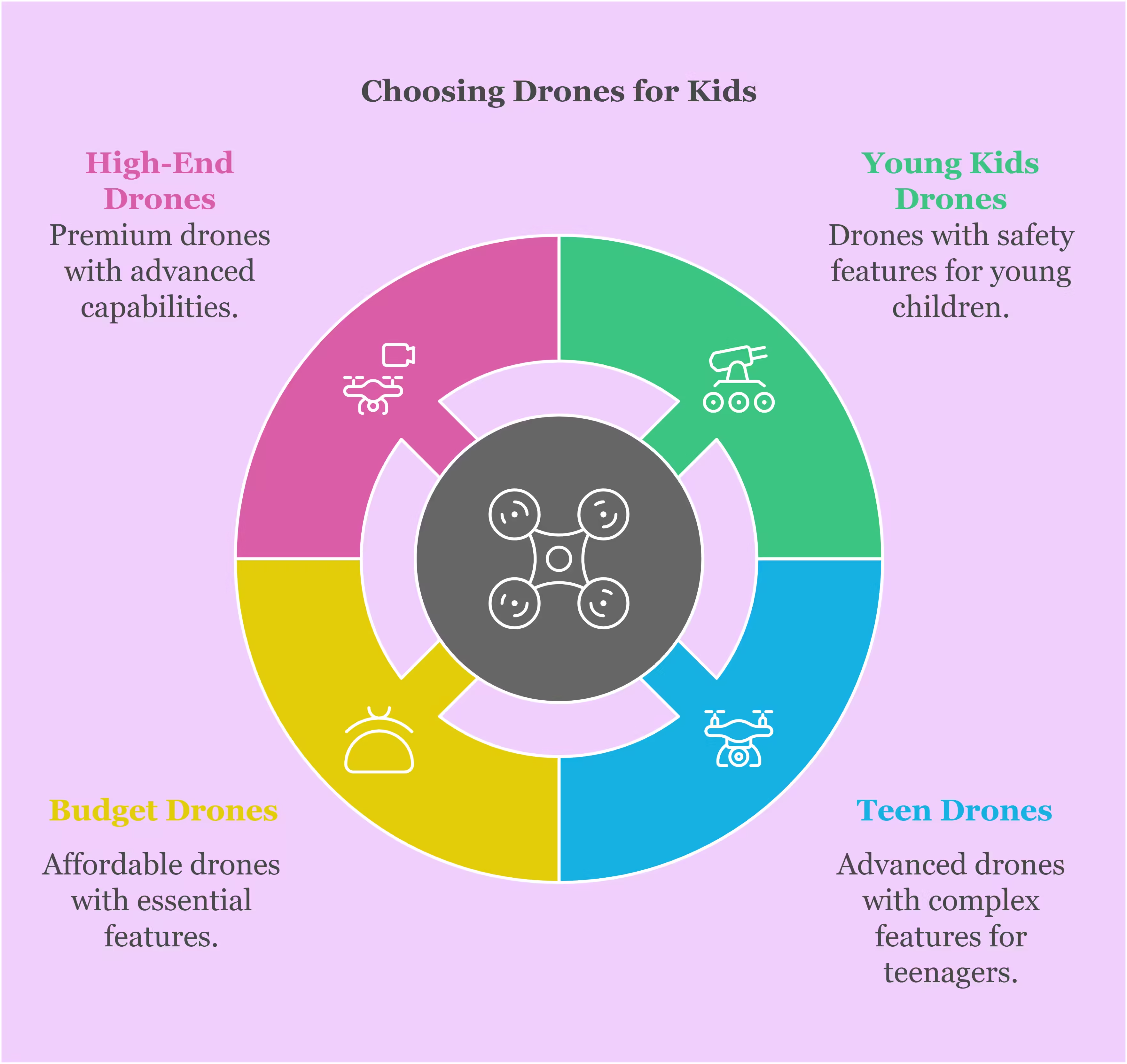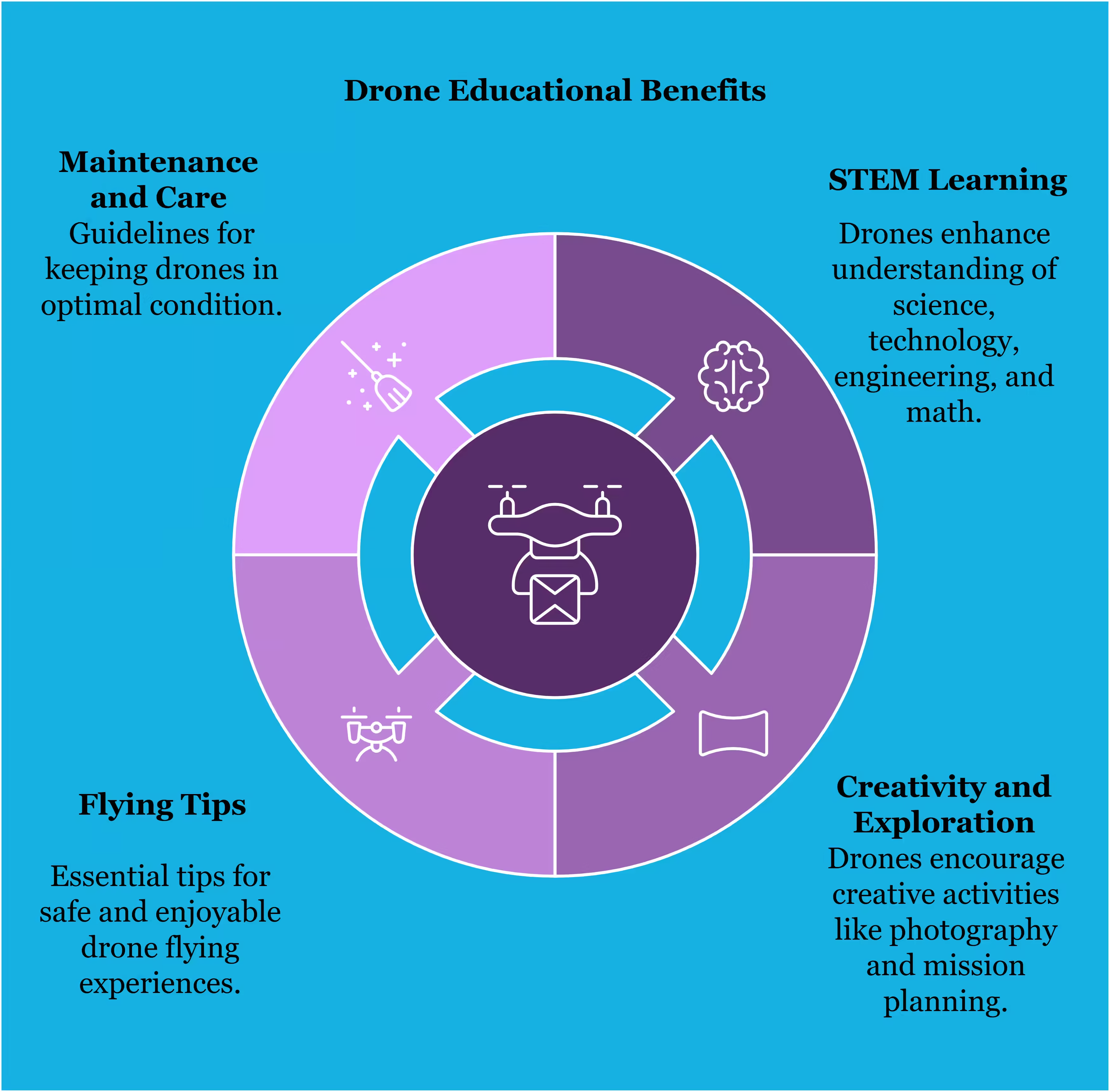The best drones for kids combine safety features, ease of use, and affordability. They should also have durable construction and engaging features.
Drones have become a popular toy among kids, offering both fun and educational opportunities. Choosing the right drone can be challenging due to the variety of options available. Parents need to consider factors such as flight stability, safety features, and ease of control.
A durable design is essential to withstand inevitable crashes. Look for drones with features like altitude hold, one-key takeoff, and headless mode for easier navigation. Budget-friendly options are available that don’t compromise on quality. Selecting the best drone ensures a safe and enjoyable flying experience for kids.
Safety First
When buying drones for kids, safety should be your top priority. Kids are naturally curious and adventurous, so it’s essential to choose a drone that ensures their safety. This section will guide you through the crucial safety aspects to consider.
Essential Safety Features
Look for drones with propeller guards. These guards protect little fingers from spinning blades. Another key feature is the auto-hover mode. It helps the drone stay stable, reducing the risk of crashes. Also, opt for drones with emergency stop. This feature allows kids to halt the drone instantly if they lose control. Lastly, choose drones with low battery alerts. These alerts notify when it’s time to land, preventing sudden crashes.
Supervision Tips
Always supervise kids while they fly their drones. Make sure they fly in open areas away from trees and buildings. Teach them to avoid crowded places to prevent accidents. Set clear boundaries on where they can fly. Use a checklist before every flight:
- Check the battery level
- Inspect propellers for damage
- Ensure the area is clear
Following these tips will keep the drone flying fun and safe for your kids.
Age-appropriate Drones
Choosing the right drone for your child can be a daunting task. Age is a crucial factor in this decision. Different age groups have different needs and skill levels. This guide will help you find the best age-appropriate drones for kids.
Drones For Young Kids
Young kids need drones that are simple and safe. These drones should be easy to control and durable. They usually have features like:
- Propeller guards
- Auto-hover
- One-button takeoff/landing
Here are some excellent options for young kids:
| Drone Model | Key Features |
|---|---|
| Holy Stone HS210 | Propeller guards, Auto-hover, One-button takeoff/landing |
| SNAPTAIN H823H | Durable, Easy controls, Safe design |
Drones For Teens
Teens have more advanced skills. They need drones with more features. These drones often include:
- HD cameras
- Smartphone control
- Advanced flight modes
Here are some top picks for teens:
| Drone Model | Key Features |
|---|---|
| DJI Mini 2 | 4K camera, Long battery life, Advanced flight modes |
| Ryze Tello | HD camera, Programmable, Smartphone control |
Choosing the perfect drone for your child can be tricky. This guide helps you find the best drones for kids. We have selected top picks in different categories. Let’s explore the best budget and high-end drones for kids.
Best Budget Drones
For those on a tight budget, these drones offer great value. They are affordable yet packed with fun features.
| Drone | Features | Price |
|---|---|---|
| Holy Stone HS210 | 3 Speed Modes, Auto-Hover, Easy Controls | $29.99 |
| Syma X20 Mini | Headless Mode, 6-Axis Gyro, One-Key Takeoff | $24.99 |
| Potensic A20 | Altitude Hold, 3 Flight Speeds, Durable | $25.99 |
- Holy Stone HS210: This drone is perfect for beginners. It has 3 speed modes and auto-hover.
- Syma X20 Mini: Small but powerful, it includes headless mode and one-key takeoff.
- Potensic A20: With altitude hold and 3 flight speeds, it is very durable.
High-end Drones
High-end drones are perfect for advanced young pilots. They come with advanced features and great performance.
| Drone | Features | Price |
|---|---|---|
| DJI Mini 2 | 4K Camera, GPS, Long Flight Time | $449.00 |
| Ryze Tello | HD Camera, VR Support, Multiple Flight Modes | $99.00 |
| Parrot Anafi | 4K HDR Camera, Foldable, Great Stability | $699.00 |
- DJI Mini 2: Offers a 4K camera and long flight time. It is very reliable.
- Ryze Tello: This drone supports VR and has multiple flight modes. Ideal for tech-savvy kids.
- Parrot Anafi: Equipped with a 4K HDR camera. It is foldable and very stable.
Key Features To Consider
Choosing a drone for kids can be a fun process. To help you, we have listed key features to consider. These features ensure safety, ease of use, and durability.
Durability
Durability is essential for kids’ drones. Kids might crash their drones often. Look for drones made from strong materials. Features like propeller guards can protect the drone. A sturdy design means less worry about damages.
| Material | Why It’s Important |
|---|---|
| Plastic | Lightweight and cheap but can break easily. |
| ABS Plastic | More durable and impact-resistant. |
| Carbon Fiber | Very strong but more expensive. |
Ease Of Use
Drones for kids should be easy to use. Simple controls help kids learn faster. Look for features like one-button take-off and landing. An altitude hold function keeps the drone at a steady height. This makes flying easier for beginners.
- Simple remote control
- One-button take-off
- Landing feature
- Altitude hold
Many drones come with beginner modes. These modes limit speed and range. This helps kids practice safely. Auto-return home is another good feature. It ensures the drone returns if it flies out of range.
Educational Benefits
Drones are not just toys; they offer significant educational benefits for kids. These flying gadgets can help children learn and grow in many ways. Let’s explore how drones can be educational tools.
Stem Learning
Drones can boost STEM learning by teaching science, technology, engineering, and math skills. Kids learn about aerodynamics and how drones fly. They understand the physics behind flight and how different parts work together.
Using drones, children can also learn about coding. Some drones require programming to operate. This helps kids develop coding skills in a fun and interactive way.
Here’s a quick look at the STEM skills drones can teach:
- Physics: Understanding flight mechanics
- Technology: Learning about drone components
- Engineering: Building and repairing drones
- Math: Calculating flight paths and speed
Creativity And Exploration
Drones offer a platform for creativity and exploration. Kids can use drones to capture stunning aerial photos and videos. This helps them see the world from new perspectives.
Children can also create flight paths and plan missions. This encourages them to think critically and solve problems. They can explore different environments and learn about geography and nature.
Here are some ways drones foster creativity:
- Photography: Taking unique aerial shots
- Exploration: Discovering new areas
- Problem-Solving: Planning and executing flight missions
- Storytelling: Creating videos and stories from drone footage
In summary, drones are fantastic tools for learning and creativity. They make education fun and engaging for kids.
Tips For First-time Flyers
Flying a drone for the first time can be exciting and fun. Whether it’s your child’s first drone or a gift, these tips can help first-time flyers. Let’s explore some essential tips for a safe and enjoyable experience.
Basic Flying Techniques
Learning basic flying techniques is crucial for new drone pilots. Start with these simple steps:
- Takeoff and Landing: Practice taking off and landing in an open space. Use gentle movements on the controls.
- Hovering: Keep the drone steady in the air. Practice hovering at different heights.
- Directional Control: Learn to move the drone forward, backward, left, and right. Use small inputs on the control sticks.
Common Mistakes To Avoid
Avoiding common mistakes can make the flying experience smoother. Here are some tips to keep in mind:
- Flying Indoors: Avoid flying indoors if you are a beginner. Drones need space to move freely.
- Ignoring Weather Conditions: Avoid flying in strong winds or rain. Weather can affect the drone’s stability.
- Overloading the Drone: Avoid attaching too many accessories. Extra weight can make the drone harder to control.
By following these tips, first-time flyers can enjoy flying drones safely and confidently. Happy flying!
Maintenance And Care
Proper maintenance and care of drones ensure they last longer and perform better. This section covers essential tips on keeping your drone in top shape.
Cleaning Tips
Keeping your drone clean is crucial for its performance. Follow these simple steps:
- Remove debris: Use a soft brush to remove dirt from the propellers.
- Wipe the body: Use a damp cloth to wipe the drone’s body gently.
- Check the sensors: Ensure the sensors are clean and free from obstructions.
- Inspect the camera: Clean the camera lens with a microfiber cloth.
Battery Management
Proper battery care extends your drone’s flight time. Follow these tips to manage the battery:
- Charge correctly: Use the charger provided with the drone.
- Store properly: Keep the battery in a cool, dry place.
- Monitor usage: Avoid running the battery down completely.
- Check for damage: Inspect the battery for any signs of wear or damage.
Follow these steps for a longer-lasting battery and better drone performance.
Frequently Asked Questions
What Are The Best Drones For Kids?
The best drones for kids include DJI Ryze Tello, Holy Stone HS210, and Potensic A20. These drones are affordable, easy to use, and have safety features.
Are Drones Safe For Kids To Use?
Yes, drones are safe for kids if they have beginner-friendly controls and safety features. Supervision is recommended for younger children.
What Features To Look For In Kids’ Drones?
Look for features like easy controls, durable build, and safety modes. Good battery life and camera quality are also important.
Can Kids Learn To Fly Drones Easily?
Yes, kids can learn to fly drones easily with beginner-friendly models. Many drones offer easy-to-use controls and practice modes.
Conclusion
Choosing the right drone for your child can be fun and rewarding. Prioritize safety and ease of use. Consider features that match their interests and skills. With this guide, you’re better equipped to make an informed decision. Enjoy watching your child explore the skies with their new drone!




